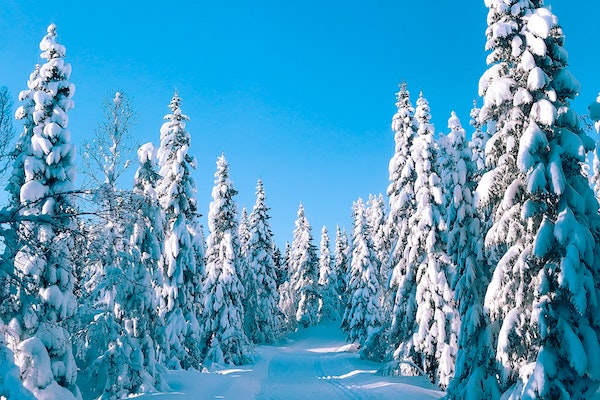Frozen Beauty: Capturing the Magic of Snowy Landscapes Through Your Lens
When winter arrives and blankets the world in a pristine layer of snow, photographers are presented with a canvas of ethereal beauty that’s unlike any other. The hushed serenity, the glistening landscapes, and the unique challenges that snow photography presents all come together to create a magical experience. In this article, we’ll embark on a journey into the heart of winter photography, where you’ll learn about the essential equipment, exposure techniques, creative composition, and more. Whether you’re an amateur or a seasoned pro, get ready to embrace the enchantment of snowy landscapes.
1. Essential Gear for Snow Photography
Before heading out into the winter wonderland, it’s crucial to prepare the right gear:
- Camera and Lenses: Invest in a sturdy, weather-sealed camera body and high-quality lenses. Wide-angle lenses are ideal for capturing vast snowy landscapes, while telephoto lenses can help you bring distant subjects closer.
- Protection for Your Camera: Cold temperatures can be hard on your camera, so use a protective camera cover or case to keep it insulated. Condensation can also be a problem when moving between extreme cold and warmth, so consider using a zip-lock bag to let your camera acclimatize.
- Extra Batteries: Cold weather can quickly drain your camera’s battery. Make sure to carry extra batteries and keep them warm until you need them.
2. Mastering Snow Exposure
Understanding exposure in snowy conditions is crucial to capture the true beauty of the winter landscape:
- Expose for the Snow: The reflective nature of snow can often fool your camera’s metering system. To avoid underexposure, use your camera’s exposure compensation to add some positive exposure. Start with +1 stop and adjust from there.
- White Balance: Snow can sometimes appear with a blue tint in photos. Adjust your white balance to a cooler setting to neutralize this effect. Shooting in RAW format can also help you fine-tune white balance in post-processing.
- Avoid Overexposure: While you want to expose for the snow, be cautious not to overexpose. Highlight details in snow can be easily lost. Use your camera’s histogram to ensure you’re not clipping the highlights.
3. Creative Composition in Snowy Settings
Snow offers a pristine canvas for your creativity. Here are some composition tips:
- Leading Lines: Use snow-covered paths or fences as leading lines to draw the viewer’s eye into the scene.
- Framing: Look for natural frames, like snow-covered branches or archways, to add depth to your photos.
- Rule of Thirds: Apply the rule of thirds to create balanced compositions. Place your subject or point of interest along the lines or intersections.
- Textures and Patterns: Snow can create beautiful textures and patterns. Get close to capture intricate snowflakes or footprints in the snow.
4. Photographing Winter Wildlife
Winter photography isn’t just about landscapes; it’s also a great time to capture wildlife:
- Birds: Set up bird feeders and use a telephoto lens to capture the various bird species that visit during the winter months.
- Squirrels: These little creatures are often active during the winter as they search for food. Capture their playful antics in the snow.
- Deer and Other Large Mammals: In snowy environments, these animals stand out. Look for them in forests or fields and photograph them from a safe distance to avoid disturbing them.
5. Post-Processing for Winter Photography
Post-processing can enhance the beauty of snowy scenes:
- Contrast and Clarity: Adjust contrast and clarity to make the snow pop in your images. This can help accentuate the textures in the snow.
- Vibrance and Saturation: Increase vibrance to bring out the subtle colors in winter landscapes. Be cautious with saturation, as oversaturation can make the snow look unnatural.
- Dodging and Burning: Use dodging to lighten areas of snow that may appear too dark and burning to darken areas that are too bright.
6. Safety and Preparation
- Dress Warmly: Layer up to stay warm and wear moisture-wicking materials. Don’t forget gloves, warm socks, and a hat.
- Footwear: Invest in good-quality winter boots that are waterproof and insulated.
- Stay Hydrated: Dehydration is common in cold weather. Drink warm beverages and stay hydrated.
- Safety First: Check weather conditions and inform someone about your location and expected return time. Carry essentials like a map, compass, and flashlight.
7. Exploring Snowy Locations
If you’re eager to capture snowy landscapes, you can explore these fantastic destinations:
- Segla, Senja, Norway: This stunning mountain on the island of Senja provides breathtaking views of snow-covered fjords and the dramatic Segla Peak.
- Bavarian Alps, Germany: The Bavarian Alps offer a snowy paradise with charming villages and breathtaking mountain landscapes.
- Banff National Park, Canada: A winter wonderland, Banff features frozen lakes, snow-covered peaks, and opportunities to spot wildlife.
- Yellowstone National Park, USA: Experience the enchantment of geothermal features set against a snowy backdrop.
- Hokkaido, Japan: Hokkaido is known for its deep snow, making it a dream destination for winter photography
Conclusion
Snow photography isn’t just about taking pictures; it’s about experiencing the enchantment of a snowy wonderland. The pristine landscapes, the hushed serenity, and the unique challenges that snow presents to photographers create a magical experience like no other. With the right gear, techniques, and an artistic eye, you can capture the essence of winter. Remember to prioritize safety, especially in cold conditions.
To put your skills into practice, visit stunning snowy locations like Segla in Norway, the Bavarian Alps in Germany, Banff National Park in Canada, Yellowstone National Park in the USA, or Hokkaido in Japan.
Every snowflake is unique, and every snowy scene tells a different story. The key is to immerse yourself in this breathtaking environment and let your creativity run wild. Happy shooting!

